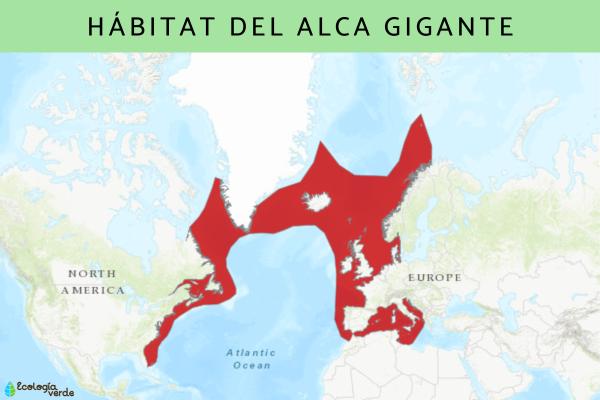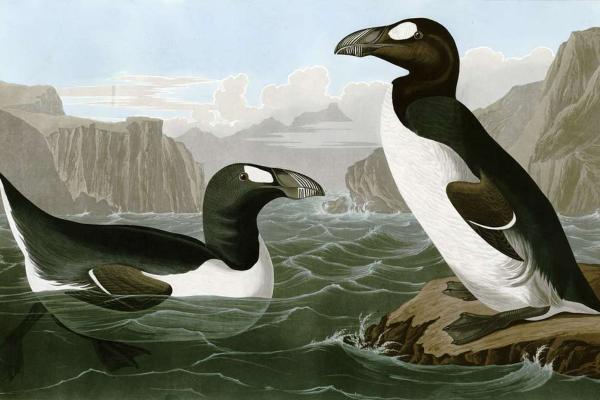The Great Auk (Pinguinus impennis) is a now extinct seabird. It became extinct due to overhunting. They lived in the North Atlantic Ocean and fed on fish.

Auks are similar to penguins, but differ in that they have some ability to fly (although very limited), are more capable of walking, and have larger beaks. However, the Great Auk is the only species in the family Auk that cannot fly, and flight is a very important characteristic of this species. If you want to know more about the reasons for the Great Auk's extinction, its habitat, its diet, etc., we invite you to read this article.
Why Did the Great Auk Go Extinct?
Habitat of the Great Auk
Great Auk’s Diet
Physical Description of the Great Auk
Importance of the Great Auk to Humans
The great auk, once a prominent seabird, is now extinct due to relentless overhunting. By the 17th and 18th centuries, the inability to fly made it an easy target for humans seeking its meat, fat, feathers, and large eggs. Later, as populations dwindled, collecting great auks and their remains became a symbol of prestige—further accelerating their decline.
The species was also vulnerable during the nesting season, as suitable rocky breeding sites were limited. The last major breeding colony disappeared in 1830 after a volcanic eruption submerged their island refuge. Survivors migrated to a nearby island but were eventually captured by humans in 1835, with the last individual recorded in 1852.
The great auk was a fully marine bird, highly adapted to life in the ocean but unable to fly. Its historical range spanned the North Atlantic—from Italy and Greenland to North America, with its southern limits reaching Florida, Italy, and Spain.

Major breeding sites were located in Canada, Greenland, the Faroe Islands, Iceland, Ireland, and the UK. In winter, they migrated further south to the US (New England) and southern Spain. Expert swimmers and divers, great auks spent most of their lives at sea and only came ashore to breed and rest.
Great auks were primarily piscivorous, dominating their ecological niche as fish-eaters. Adults mainly hunted fish around 20 cm in length, especially capelin (Mallotus villosus) and Atlantic menhaden (Brevoortia tyrannus). Chicks and juveniles fed on plankton and fish regurgitated by adults.
Black back, white underparts
Short, stubby wings; flightless
Stood upright on two legs
Distinctive white spot below each eye; reddish eyes
Large, downward-curving beak with a straight lower edge
Streamlined body for efficient swimming
Short, thick neck
Height: 70–85 cm
Webbed feet for diving
Black-and-white dividing band between head and chest

The great auk was significant for humans throughout history. For Neanderthals and early humans, it was a vital food source, with its meat and eggs depicted in ancient cave paintings (e.g., El Pendo, Spain). Archaeological findings suggest its bones and beaks served as symbolic objects and clothing materials.
In later centuries, sailors viewed great auks as signs that land was near, thanks to their coastal habits. Unfortunately, human exploitation ultimately drove the species to extinction, highlighting the urgent need for responsible resource management to prevent further losses.
This article has covered the causes of the great auk’s extinction, its range, diet, physical features, and role in human society. For more stories about extinct birds (like the dodo), explore our other in-depth wildlife articles!
animal tags: Great Auk
We created this article in conjunction with AI technology, then made sure it was fact-checked and edited by a Animals Top editor.